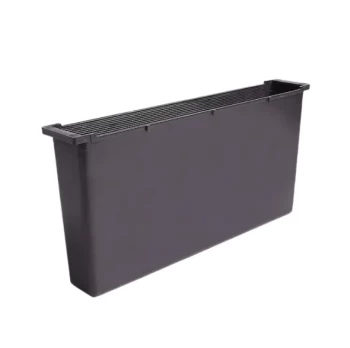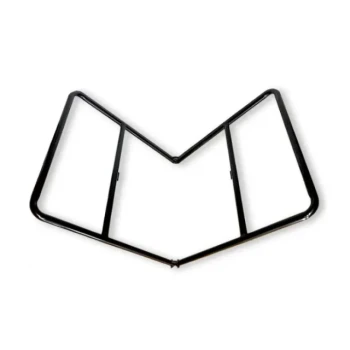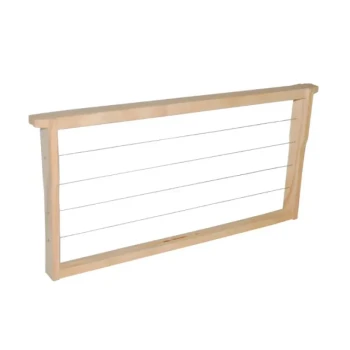The transparent cup in a bee feeder is a safety device. Its primary purpose is to create a controlled access point to the sugar syrup, preventing the bees from falling into the main reservoir and drowning. As a secondary benefit, its transparency allows the beekeeper to easily observe the bees and confirm they are actively taking the feed.
The core challenge of any liquid bee feeder is providing nourishment without creating a drowning hazard. The transparent cup solves this by acting as a protective barrier, giving bees a safe platform from which to eat while allowing the beekeeper to monitor activity at a glance.
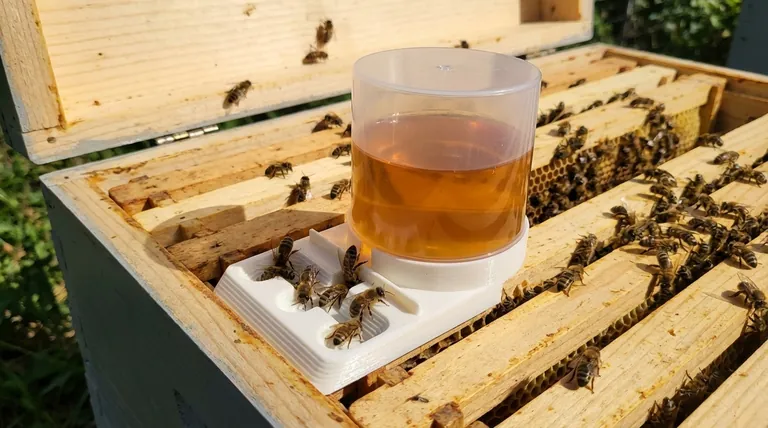
The Core Problem: Drowning Risk in Liquid Feeders
To understand the cup's design, you must first understand the danger it mitigates. Supplemental feeding is critical for new or weak colonies, but it comes with inherent risks.
Why Bees Drown Easily
Bees are terrestrial insects that cannot swim. When they fall into a pool of liquid like sugar syrup, their wings become saturated, making flight impossible. They quickly get stuck, exhaust themselves, and drown.
The Feeder's Dilemma
A feeder's fundamental goal is to provide easy access to a large volume of syrup. However, an open pool of that syrup is a significant death trap for the very bees you are trying to help. This is the central problem that feeder designs must solve.
How the Transparent Cup Provides a Solution
The transparent cup is a simple but effective component in certain types of in-hive feeders, specifically designed to create a safe feeding environment.
It Acts as a Protective Barrier
The cup sits inside the main body of the feeder, creating a central "well" or chamber. Bees can crawl down into this protected space to access the syrup through small openings, ladders, or textured surfaces. This design keeps them contained and prevents them from ever reaching the main, open reservoir of liquid where they would drown.
It Allows for Clear Observation
The transparency of the cup is a key feature for the beekeeper. It enables you to quickly lift the hive lid and see if bees are actively consuming the syrup. This is a fast, low-disturbance way to gauge the colony's health and need for the feed.
Common Pitfalls and Best Practices
While effective, this design requires correct usage to remain safe. A simple mistake during setup can render the safety features useless.
The Danger of a Floating Cup
The most common error is filling the feeder with syrup before placing the transparent cup inside. The lightweight plastic cup will float on the liquid, creating a dangerous gap between the cup's rim and the feeder wall. Bees can slip into this gap, become trapped underneath the cup, and drown.
The Correct Installation Procedure
To prevent this, always assemble the feeder completely while it is empty. Place the transparent cup securely into the feeder body first. Then, place the entire empty feeder unit into the hive. Only then should you pour the sugar syrup into the feeder. This ensures the cup remains seated at the bottom, functioning as intended.
Applying This to Your Hive Management
Your approach to using this feeder should be guided by your specific beekeeping goals.
- If your primary focus is establishing a new colony: Use this type of feeder to provide the crucial energy your bees need for building comb, but be diligent about correct installation to protect your starting population.
- If your primary focus is bee safety: Always place the empty, fully assembled feeder in the hive before you fill it. This single step prevents the most common failure mode of this design.
- If your primary focus is efficient monitoring: Leverage the transparent cup to perform quick, low-stress checks on feeding activity, helping you assess the colony's needs without a full hive inspection.
Understanding this simple component's design intent is key to using it effectively and ensuring you are helping your colony thrive.
Summary Table:
| Purpose | Function | Benefit |
|---|---|---|
| Safety | Creates a protective barrier and controlled access point. | Prevents bees from falling into the main syrup reservoir and drowning. |
| Monitoring | Allows for clear visual observation of the feeding area. | Enables beekeepers to quickly confirm feeding activity without disturbing the hive. |
Ensure Your Bees Feed Safely and Efficiently
Understanding the purpose of each component is key to successful hive management. For commercial apiaries and distributors, reliable, well-designed equipment is not just a convenience—it's a necessity for protecting your investment and ensuring colony health.
HONESTBEE supplies high-quality beekeeping supplies and equipment, including safe and effective feeders, through our wholesale-focused operations. We are committed to providing durable products that meet the demanding needs of commercial beekeeping.
Let us help you equip your operation for success. Contact HONESTBEE today to discuss your wholesale needs and discover how our equipment can contribute to the health and productivity of your colonies.
Visual Guide
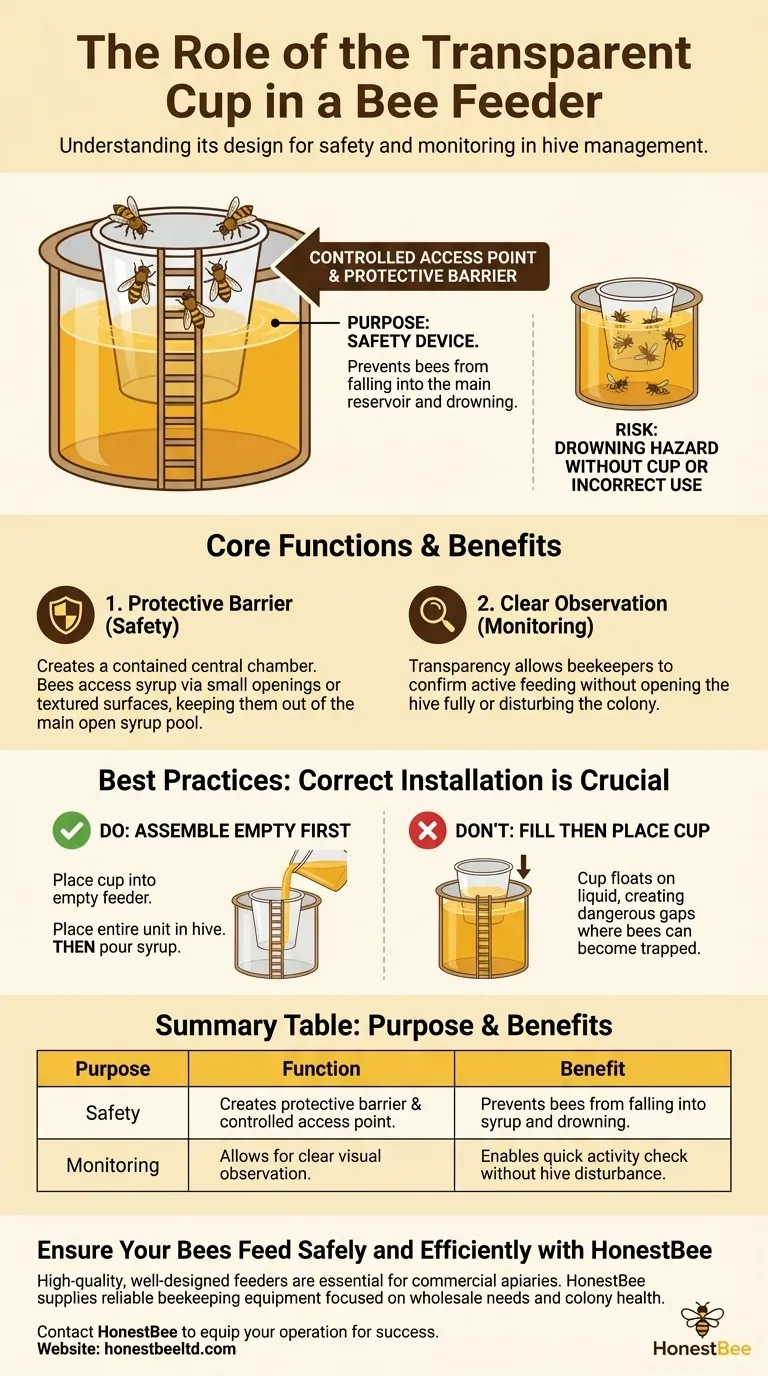
Related Products
- HONESTBEE Entrance Bee Feeder Professional Hive Nutrition Solution for Beekeeping
- HONESTBEE Professional Hive Top Bee Feeder Feeding Solution
- Professional Hive Front Entrance Bee Feeder
- HONESTBEE Professional Entrance Bee Feeder Hive Nutrition Solution
- Boardman Entrance Bee Feeder Durable Galvanized Steel and Wood Construction for Beekeeping
People Also Ask
- What is the best feeder for bees? Choose the Right Feeder for Your Hive's Success
- What is an entrance feeder? A Guide to Its Simple Design and High Robbing Risk
- How is the mesh ladder and barrier installed in the feeder box? A Step-by-Step Guide to Prevent Bee Drowning
- What are the common types of honey bee feeders? Choose the Right Feeder for Your Hive
- How does the entrance feeder method work? A Guide to Simple But Risky Hive Feeding









